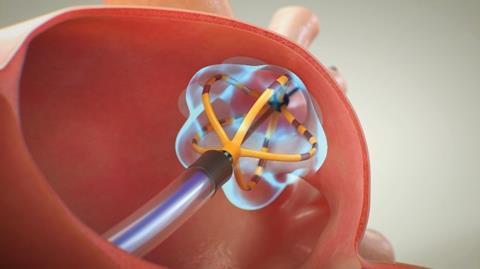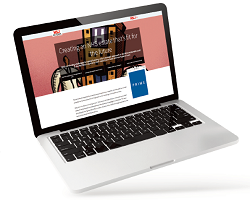Boston Scientific’s Racho Strauven explains how pulsed field ablation (PFA) is a cost-saving alternative for treating atrial fibrillation (AF). He highlights a study published in BMJ Open that suggests PFA could save the NHS an average of £343 per patient, paving the way for improved patient outcomes and healthcare efficiency.
AF affects more than 1.4 million people in the UK1 and accounts for a significant amount of NHS funding, with direct costs estimated at between £1.4-£2.5bn annually.2 Over the coming years, as the population ages, AF is highly likely to impose a growing burden on NHS budgets and the wider UK healthcare system.
The need for a cost-effective solution that also improves patient outcomes has never been more urgent.
Sponsored and written by
Pulsed field ablation: safe, fast, effective
The National Institute for Health and Care Excellence (NICE) recommends left atrial ablation for the treatment of AF where drug therapy has been unsuccessful, unsuitable or not tolerated.3 Traditionally, this procedure has involved targeting abnormal heart tissue using intense cold (cryoablation) or heat (radiofrequency ablation). While these methods are effective, they carry the risk of complications, such as damage to surrounding heart structures.
A promising solution has emerged in the form of PFA. Instead of a thermal energy source, this novel technology uses rapid, pulsed electrical fields to precisely target heart cells, minimising damage to surrounding organs, nerves, or blood vessels. PFA has been used to treat paroxysmal AF in Europe since 2020, when Boston Scientific gained a CE mark for the FARAPULSE™ PFA System, and there is a significant body of clinical evidence supporting its efficacy and superior safety profile.4
PFA is also a significantly shorter procedure than conventional ablation; the ADVENT randomised clinical trial – the most rigorous PFA clinical trial to date – demonstrated that PFA with the FARAPULSE system reduced procedure times by 14 per cent compared to thermal ablation modalities.5 Faster, more predictable procedures could offer a valuable opportunity for improved hospital efficiency. This is particularly critical given the current context of constrained resources and long waiting lists.
Study confirms cost benefits to NHS

A study6 published in BMJ Open last year offers evidence of the economic benefits of PFA with the FARAPULSE system. Researchers compared the costs of treating AF with FARAPULSE PFA to cryoablation over a 12-month period, looking at various parameters including procedure costs and complication rates7 using a similar approach to that previously employed by NICE.
The findings are encouraging. Procedures with the FARAPULSE PFA system reduce the total average cost per patient by 3 per cent (-£343) – a significant saving when scaled across the NHS.
The advantages of PFA with the FARAPULSE system extend beyond pure cost savings: patients experience lower complication rates7 and reduced AF recurrence, both of which impact hospitalisations. This aligns with the NHS long-term plan’s emphasis on improving cardiovascular outcomes and enhancing patient wellbeing.
Moving forward
As AF prevalence increases, embracing innovations like the FARAPULSE PFA system is crucial for improving patient outcomes and reducing the financial burden on the NHS. By supporting widespread adoption, healthcare leaders can help ensure a more effective, equitable, and sustainable future for AF treatment.
The FARAPULSE PFA system is available on the NHS. Further information on treatment centres can be found here.
CAUTION: The law restricts these devices to sale by or on the order of a physician. Indications, contraindications, warnings, and instructions for use can be found at www.IFU-BSCI.com. Products shown for INFORMATION purposes only and may not be approved or for sale in certain countries. This material is not intended for use in France. 2025 Copyright © Boston Scientific Corporation or its affiliates. All rights reserved.
EP-1994501-AA
References
1NHS Digital. Quality and outcomes framework, 2021-22: prevalence, achievement and personalised care adjustments at regional and national level. 2022. Available at: https://digital.nhs.uk/data-and-information/publications/statistical/quality-and-outcomes-framework-achievement-prevalence-and-exceptions-data/2021-22
3National Institute of Health and Care Excellence. NICE guideline Ng196, atrial fibrillation: diagnosis and management. Available at: https://www.nice.org.uk/guidance/ng196
4Boston Scientific https://www.bostonscientific.com/en-EU/medical-specialties/electrophysiology/arrhythmias/farapulse-pulsed-field-ablation-system/clinical-evidence.html
5Reddy et al; ADVENT Investigators. Pulsed Field or Conventional Thermal Ablation for Paroxysmal Atrial Fibrillation. N Engl J Med. 2023 Nov 2;389(18):1660-1671. doi: 10.1056/NEJMoa2307291. Epub 2023 Aug 27. PMID: 37634148



























